
All categories
Featured selections
Trade Assurance
Buyer Central
Help Center
Get the app
Become a supplier

(55775 products available)













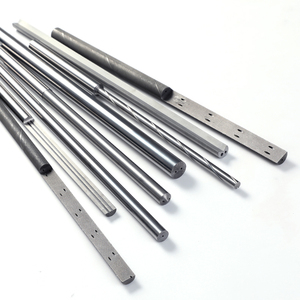
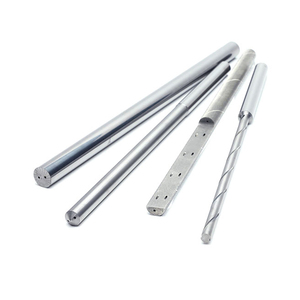





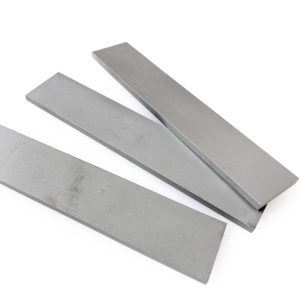

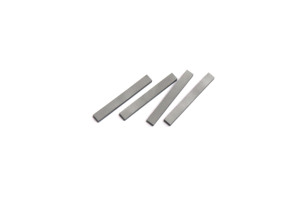
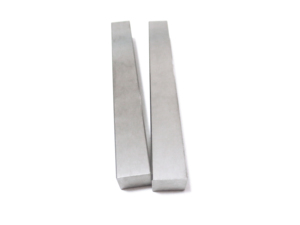



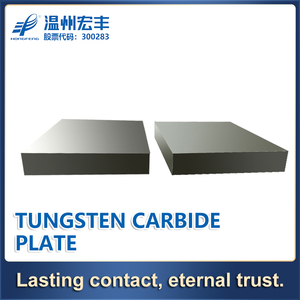




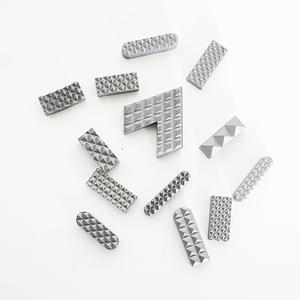












Cemented carbide has a wide application in various product types. Each product type is defined by the specific operations it performs.
Tipped tools, such as milling cutters and lathe bits, incorporate cemented carbide in their working end. These tools get a carbide tip to enable them to handle longer operations. In doing so, they improve efficiency while maintaining cost-effectiveness. Cemented carbide tips make these machines ideal for cutting materials of all kinds. Ranging from metals like steel and aluminum to more abrasive composites, plastics, and their ilk. These materials are further characterized by heavier duty usages and more intricate machining tasks.
Cutting inserts for lathes and milling machines are frequently made from cemented carbide. These devices are essential to equipment employed in metalworking. Users replace carbide inserts to maintain the operational efficiency of their machinery. The exceptional hardness and wear resistance of cemented carbide make it possible for inserts to endure highly abrasive work materials, including titanium alloys and hardened steels.
There is also a wide use of cemented carbide in carbide drill bits. These bits get used in both metalworking and mining operations. Carabide tools like drills benefit performance-wise from the material's ability to drill through tough substances like cast iron, rock, and concrete. Furthermore, cemented carbide's resilience to thermal shock makes it suitable for intensive drilling applications.
Cemented carbide is employed in the manufacturing of non-cutting tools like dies and punches. For example, carbide stamping dies. Due to its hardness and durability, cemented carbide prolongs the lifespan of these tools in bulk production. This is particularly in industries working with metals, plastics, and composite materials. Also, tools for forming operations, like extrusion dies, benefit from cemented carbide's ability to easily shape and deform materials under high pressure without significant wear.
Cemented carbide's versatility and durability enable wide use across many industries. Furthermore, its ability to easily cut, drill, and form materials makes it suitable for numerous heavy-duty applications.
Cemented carbide tools find predominant use in machining and metalworking industries. This includes cutting tools, inserts, and drills. Also, they handle tough machining tasks and work with abrasive and hard-wearing materials. These include titanium, hardened steel, and other high-strength alloys.
Cemented carbide products are also critical in the mining industry. Tungsten carbide drill bits and mining bits are majorly employed in geological exploration. They get this because of their ability to easily penetrate hard rock and mineral deposits. Additionally, carbide rotary bits and ground engaging tools provide strength and durability for underground and surface mining operations.
The construction industry also benefits from cemented carbide. Concrete saw blades and drill bits handle cutting and drilling tasks in concrete, masonry, and other tough materials. Furthermore, the material's impact resistance and toughness make it ideal for this high-stress environment.
The aerospace industry utilizes cemented carbide tools for precision machining of critical components. These components include engine parts and airframe assemblies. The hardness and wear resistance of cemented carbide maintain the tools' precision and performance over extended periods, especially when working with high-strength materials.
Cemented carbide bits and reamers are used in drilling operations in the oil and gas industry. Normally, these operations involve penetrating tough geological formations. These formations include shale and limestone. Moreover, cemented carbide's ability to withstand extreme temperatures and pressures makes it suitable for the most hostile downhole environments.
Cemented carbide is the material of choice for making punches, dies, and molds in tool and die manufacturing. Its hardness ensures it retains sharp edges and precise geometries during extended use. This is especially in stamping, molding, and extrusion processes. Normally, it works great with metals, plastics, and composite materials.
Cemented carbide products are renowned for their exceptional hardness, wear resistance, and longevity. This makes them ideal for heavy-duty applications. These products also feature high dimensional accuracy while maintaining sharpness over time. Hence, less frequent tool changes are required.
It is noteworthy that one of the main factors that contribute to cemented carbide's hardness is the tungsten grain structure. This is what makes it abrasion-resistant. Tough cobalt content acts to enhance toughness while providing bind.
Hardmetal carbide has the following physical properties:
Cemented carbide inserts and other products are compatible with various machine tools. These machines range from conventional lathes and milling machines to modern CNC centers. It is noteworthy that inserts normally come in standard sizes. This makes them interchangeable across multiple machines and manufacturers. For specific machining tasks, however, custom carbide tools may be required.
Cemented carbide vs high-speed steel (HSS): High-speed steel (HSS) offers less hardness and wear resistance and is, therefore, unsuitable for most heavy-duty applications. Nonetheless, HSS tools are more economical for general machining tasks.
Cemented carbide vs cermet: A cermet insert consists of ceramic materials and metal. It is less durable than its carbide counterpart but is an ideal option for turning on hard materials. This is due to the insert's ability to resist chemical reactions.
There are several factors a business should consider when selecting carbide products. These factors help ensure tungsten carbide tools meet operational requirements, so the first is application needs.
A business begins by identifying the specific machining or cutting tasks the products will perform. Cemented carbide tools generally come in different grades tailored for distinct applications. Options include inserts that cut precisely or drills that penetrate tougher materials. There are softer grades for general purposes, too. A business should consider operating conditions, such as work material and cutting parameters. Do they need an insert bay designed for tough, high-heat-turning jobs? Or, there are needs for milling and drilling operations? These factors will help determine what product the business needs.
Carbide tools have varying abilities to handle distinct materials. For instance, carbide cutting tools easily cut metals like steel, titanium, and nickel alloys. They are also suitable for abrasive materials like composites and ceramics. Some products are specifically designed for hard or difficult to machine materials, like carbon fiber or glass.
Cemented carbide tools come in different geometries to suit various machining requirements. These differences are usually in the design of the cutting edge, flank, and face. They all influence chip removal and tool engagement. Carbide drills have various point styles geared toward specific drilling tasks, after all. Such tasks include center positioning,chip removal, and hole wall smoothing. Milling cutters, on the other hand, feature multiple flutes of distinct lengths and approaches to balance power and smoothness. Selecting the ideal geometry helps minimize cutting forces.
Machining conditions play quite a big part in choosing a carbide product's performance. Factors like tool wear and life are influenced by the heat generated in the machining process. Customers who do lots of machining must, therefore, consider coolant application and feed rates. These factors impact heat dissipation during machining, making the equipped tools last longer and more efficiently.
The industry is gradually shifting to automation. Many tool manufacturers are investing in smart inserts as a way to enhance efficiency and extend tool life. There have been such innovations, too, where the cutting edge is coated. This helps enhance the tool's hardness and significantly reduce friction. Such products are worth seeking. Also, there is a current trend in sustainability that can not be left out. While tungsten carbide is not inherently eco-friendly, some manufacturers have developed tools using recycled carbide or greener binding agents.
A1. Cemented carbide is usually a composite material made of tungsten carbide grains and a cobalt binder. It may also contain other metal carbides like titanium and chromium, though.
A2. While tungsten carbide and cemented carbide have similar compositions, they are usually not the same. Tungsten carbide is a powder used in making various carbide tools and products. Conversely, cemented carbide is the final product used for cutting, drilling, and forming operations.
A3. The main advantage of cemented carbide is its unmatched durability and precision. It is tougher than other materials and retains sharpness while offering high wear resistance. This makes it ideal for cutting, drilling, and forming. It can also withstand high temperatures.
A4. Carbide tools are majorly used for machining hard materials like stainless steel, titanium, and nickel alloys. In addition, they cut abrasive materials like composites and ceramics.